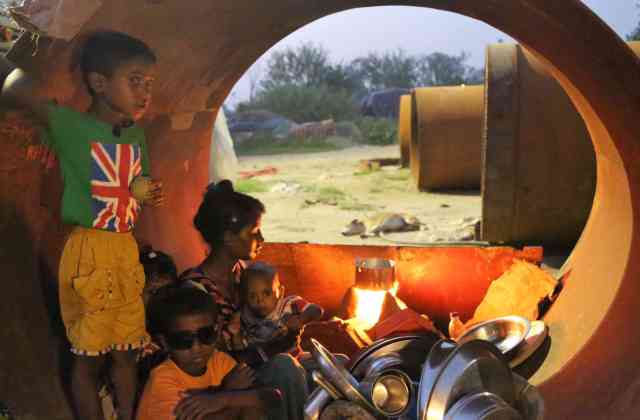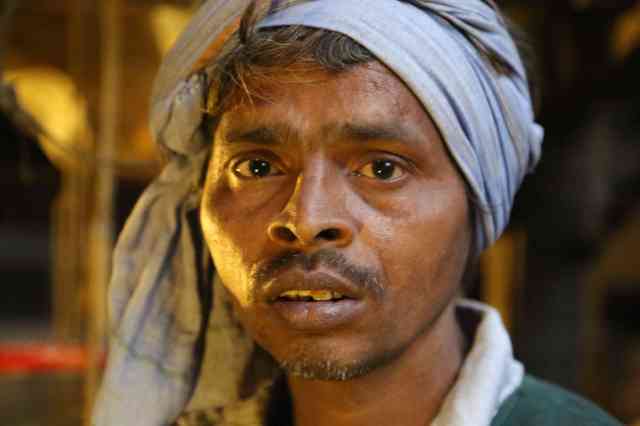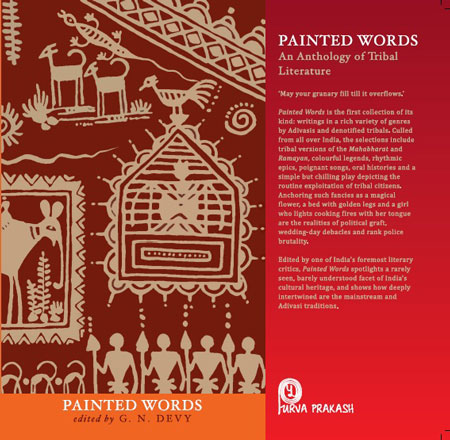
View and read the full photo essay on Scroll.in >>
The most iconic image of India’s fight for freedom is the Dandi March led by Mahatma Gandhi. The frail, yet tightly-knotted musculature of the Mahatma, with a band of men and women following in his wake, is entrenched in the national consciousness.
The defining images of India’s Independence are the many visuals of Partition, of millions walking through devastation, horror and starvation, to arrive at their nation.
Perhaps, what best defines our current times are the images of the thousands of homeless migrants walking home, given four hours to prepare for the largest lockdown in the history of the world. For more than two months, thousands have been walking without food, shelter, or basic sustenance, to reach their homes.
These are the invisible men and women whom we cannot see or hear and will not speak of. We are akin to Gandhi’s most loved allusion: the three monkeys who “see no evil, hear no evil, speak no evil”.

View and read the full photo essay on Scroll.in >>
India lives in its villages, but it has been forced to go to its cities to work. We have created a nation where nearly half of the wealth is generated by the labour of these unseen and unheard men, women and children. We call them migrant labour. For all the wealth generated by the cities, the migrants live in poverty, working in jobs that profit others but bring them very little. […]
Chitvan Gill is a writer, documentary photographer and independent filmmaker.
Source: Photo essay by Chitvan Gill: “The lives of the unseen, unheard men and women who build the cities we inhabit” (Scroll.in, 31 May 2020)
URL: https://scroll.in/article/962825/photo-essay-the-lives-of-the-unseen-unheard-men-and-women-who-build-the-cities-we-inhabit
Date visited: 1 June 2020
Reverse migration of indigenous peoples in the post lockdown period could destroy India’s tribal communities largely concentrated in ten states and in the North-Eastern region, says a joint study by Denmark-based International Work Group for Indigenous Affairs and the Indigenous Lawyers Association of India. […] Citing the report of the expert committee on tribal health, it said almost 55% of India 104 million tribal population live outside the 809 tribal majority blocks. […]
Source: Reverse migration of peoples due to lockdown may destroy India’s tribal communities by Yogima Seth Sharma, Economic Times, 7 April 2020
URL: https://economictimes.indiatimes.com/news/politics-and-nation/reverse-migration-of-peoples-due-to-lockdown-may-destroy-indias-tribal-communities/articleshow/75027171.cms
Date visited: 2 June 2020
[Bold typeface added above for emphasis]
Photo and video recommendation: a voice from rural India worth being heard
Whether you plan a visit or seek to learn more about India’s rural life – perhaps inspired by the Gandhian social movement or Rabindranath Tagore – explore “a living journal, a breathing archive” in the Adivasi category of PARI: the People’s Archive of Rural India initiated by distinguished photo journalist-turned-activist P. Sainath, continually enriched by stories from all over India.
“In less than 200 years, photography has gone from an expensive, complex process to an ordinary part of everyday life. From selfies to satellites, most of the technology we use and spaces we inhabit rely on cameras. […] While photographic documentation can aid in shaping history, it can also be a window into the horrors of the past.” – Read more or listen to Butterfly Effect 9 – The Camera on CBC Radio Spark 26 May 2023 >>
See also
Education and literacy | Right to education
Freedom of the press | World Press Freedom Index
Journalism | Find press reports on India’s tribal heritage and democracy: Journalism without Fear or Favour, The Committee to Protect Journalists & United Nations
People’s Archive of Rural India (PARI)
Proper coverage of “deprivation”: Ethical considerations for students of Indian journalism
Recovering tribal culture from the misrepresentation of mainstream media
Tips for using interactive maps
Toggle to normal view (from reader view) should the interactive map not be displayed by your tablet, smartphone or pc browser
For details and hyperlinks click on the rectangular button (left on the map’s header)
Scroll and click on one of the markers for information of special interest
Explore India’s tribal cultural heritage with the help of another interactive map >>
See also
Adverse inclusion | Casteism | Rural poverty
Demographic Status of Scheduled Tribe Population of India (Census figures 2011)
Fact checking | Figures, census and other statistics
Human Rights Commission (posts) | www.nhrc.nic.in (Government of India)
Search tips | Names of tribal communities, regions and states of India
“What is the Forest Rights Act about?” – Campaign for Survival and Dignity
“Who are Scheduled Tribes?” – Government of India (National Commission for Scheduled Tribes, NCST)

Tribal Literature by G.N. Devy >>
Free eBooks & Magazine: Adivasi literature and languages >>
“India, a union of states, is a Sovereign, Secular, Democratic Republic with a Parliamentary system of Government. The President is the constitutional head of Executive of the Union. In the states, the Governor, as the representative of the President, is the head of Executive. The system of government in states closely resembles that of the Union. There are 28 states and 8 Union territories in the country. Union Territories are administered by the President through an Administrator appointed by him/her. From the largest to the smallest, each State/UT of India has a unique demography, history and culture, dress, festivals, language etc. This section introduces you to the various States/UTs in the Country and urges you to explore their magnificent uniqueness…” – KnowIndia (Government), States and Union Territories (Visited: 2 September 2023)
Learn more about India’s 28 States and 8 Union Territories – From Andhra Pradesh to West Bengal | Nutrition >>